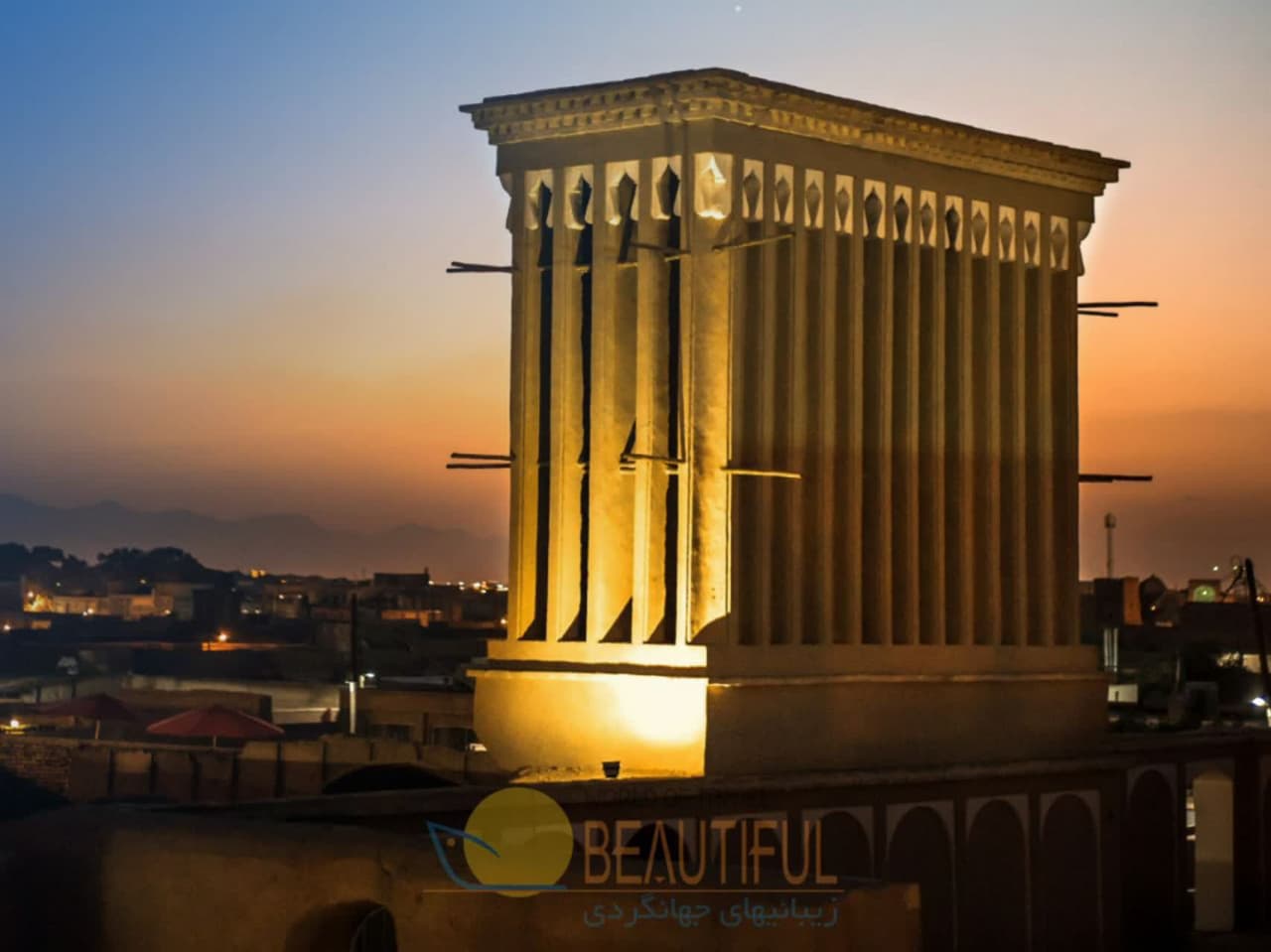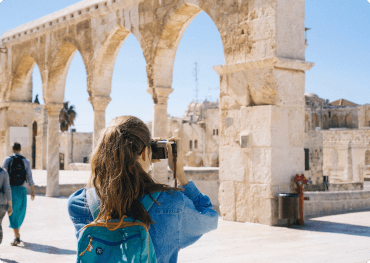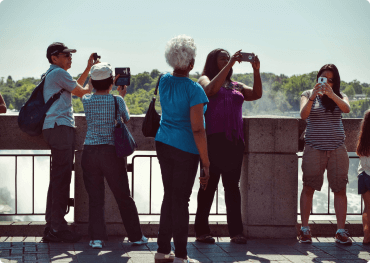
CU-113
Package Details
Day 1: Tehran
Arrival at Tehran, meet and assist at airport and then transfer to Hotel
O/N: Tehran.
Day 2: Tehran - Ramsar
Morning drive from Tehran to Ramsar (250 km) via Chalous, on the way visiting beautiful forests
Of Alborz and the Caspian Sea.
O/N: Ramsar.
Ramsar city with indescribable beauty in the western end of the province and the beautiful forest on the slopes of the Alborz and dream beaches of the Caspian Sea lie with its tourist attractions and accommodation, catering and recreational and shortest distance between the mountains and the sea with the title of the bride cities as poles tourism is important in the country and even the world.
Day 3: Ramsar - Anzali
After breakfast, drive from Ramsar to Masouleh (186 km) visit Masouleh then drive to Anzali (64 km).
Visit the Lagoon of Anzali.
O/N: Rasht.
Masuleh is a city in and the capital of Sardar-e Jangal District, in Fuman County, Gilan Province, Iran. At the 2006 census, its population was 554 individuals from 180 families.
Masuleh is approximately 60 km southwest of Rasht and 32 km west of Fuman. The village is 1,050 meters above sea level in the Alborz (or Elburz) mountain range, near the southern coast of the Caspian Sea. The village itself has a difference in elevation of 100 meters.
Although it has been written that the community was established around 10 AD, the province of Gilan has a long history. The first village of Masuleh was established around 1006 AD, 6 km northwest of the current city, and it is called Old-Masuleh (Kohneh Masuleh in Persian). People moved from Old-Masuleh to the current city because of pestilence and attacks from neighbouring communities.Masouheh-Rood-Khan is the river passing through the city, with a waterfall located just 200 meters away from the village. It's cut-off by snow during the winter months. Fog is the predominant weather feature of Masuleh.
Anzali Lagoon is a coastal liman, or lagoon, in the Caspian Sea near Bandar-e Anzali, in the northern Iranian province of Gilan. The lagoon divides Bandar-e Anzali into two parts, and is home to both the Selke Wildlife Refuge and the Siahkesheem Marsh.Although the lagoon suffers from pollution, it is known as a good place for bird watching. The lagoon's water ranges from fresh near the tributary streams to brackish near the mouth into the harbor and the sea. Studies indicate that in the 19th and early 20th Centuries that the lagoon had a much higher salinity.The lagoon has decreased in size since the 1930s to less than a quarter of its former extent. However, in the last ten years (As of 2007) water salinity has increased both by the rise of the level of the Caspian Sea which has caused greater interchange of waters, and due to greater salt transport in incoming "fresh" water due to increased upstream irrigation.
Day4: Rasht - Tehran
Morning drive from Rasht to Tehran (330 km) via Qazvin. In Qazvin, visit Shazde Hossein Holy Shrine,
Ali Qapou Edifice Continue to Tehran. Arrival to Tehran evening, transfer to domestic airport and flight to Shiraz.
O/N: Shiraz.
The Imamzadeh Hossein is the grave mosque of a son of the 8th Imam Ali al-Ridha ("Hazrat-e Reza") in Qazvin, Iran that the Safavids - Shah Tahmasp I built in the mid-16th century as a pilgrimage center.
The namesake of the tomb is the biennial deceased son of Imam Hossein. This passed in transit with his father to Khorasan in Qazvin in 821 and was buried at the site. Later more people were buried from the Safavid dynasty bib. Tahmasp I, who had his seat of government in Qazvin, built the tomb. His daughter "Zainab Beygum" expanded it in 1630, as is testified by a tile inscription.
Ali Qapu one of the monuments and tourism in the city of Qazvin at the beginning of Sepah Street - first street built in Iran - is located. The building entrance is one of seven at the entrance to the citadel of the royal Safavid ; and in South Main Street and King Square that was open and only in this collection that now has remained.
Day 5: Shiraz
After breakfast, drive to Perspolis and Naqsh-e Rostam .Evening back to Shiraz.
O/N: Shiraz.
Persepolis the name of one of the ancient cities of Iran that joined over the years, the capital 's stately and ceremonial monarchy at the time of the Achaemenid Empire was. In this ancient city called Persepolis palace that during the reign of Darius , Xerxes and Artaxerxes was built and was built for about 200 years. On the first day of the New Year , many groups from different countries representing Satrapyha or governments gathered in Persepolis with diverse took offerings and gifts were presented to the king.
Persepolis in 518 BCE as the new capital of the Achaemenid the gamers began. Founder of Persepolis, Darius was, of course, after his son Xerxes and his grandson Artaxerxes I to extend this series to expand it added. Many existing knowledge about the history and culture of the Achaemenid stone inscriptions and Flznvshthhayy is available for the palaces and on the walls and the tablet is engraved. Sumner has estimated that the plain of Persepolis which contains 39 residential camp was in the Achaemenid period 43, 600 people had. Historians believe that Alexander the Macedonian commander Greek in 330 BC, invaded Iran and burned Persepolis and probably a large part of the books, Achaemenid art and culture destroyed by it. However, the ruins of this place is still up and archeology of its ruins signs of fire and rush to acknowledge it.
This place since 1979, one of Iran's record on the UNESCO World Heritage is.
Persepolis in the northern city near Shiraz , south of Fars province (northeast of Shiraz ) is replaced.
At a distance of six and a half kilometers from Persepolis, Naqsh-e Rustam is located.
Naqsh-e Rustam name of the ancient collection Zangiabad village located in the northern city of Shiraz in Fars province of Iran , which is 6 kilometers from Persepolis is located. Yadmanhayy the archaeological site of the Elamite , Achaemenid and Sassanid in its place and has around 1200 BC to 625 AD was the focus of attention because the tomb four kings Achaemenid, Sassanian reliefs of a number of major events, building the Kaaba of Zoroaster and Vyranshdhay relief from the Elamite era in this place and in the Sassanid era, Naqsh-e Rustam area of religious and national importance have been.
In the past, this place was Dogonbadan Segonbad or among the people of the region were caught by the names of the mountain, the mountain was also called Nfsht pool or mountains after the Iranians and possibly the name of Naqsh-e Rustam between Rostam , the hero of Shahnameh and communicate the Sassanid kings were Sngngarhhay It was to this place.
The oldest role in Naqsh-e Rustam is the Elamite period and the king and queen of the gods and goddesses were portrayed, but later in the Sassanid era, Bahram II parts of it wiped and his role and his courtiers erected in its place. Kaaba of Zoroaster and Brjmannd in the Mhvthast stone building that was built during the Achaemenid period is likely to be unclear and its application is based on three corners of the building has two inscriptions of Shapur I and Kartir written that historically are of great value.
Four Tomb dungeon in the bosom of the Mountain of Mercy have been dug that belonged to Darius the Great , Xerxes , Artaxerxes I , and Darius II that all of them have the same properties.
Ardashir the first one who in this area, Sngngarhay shaved and Tajgyryash scene of Ahura Mazda recorded. He also Tajgzaryshan Sassanid kings scenes or descriptions of battles and Aftkhartshan on the breast of the mountain. That Artaxerxes and his son Shapur II Nqshbrjsthhayy counterparts in the Achaemenid reliefs in Naqsh-e Rustam shaved, probably in imitation of the past have been the political and cultural sequences.
Day 6: Shiraz
Full day city tour of Shiraz to visit Vakil Complex, traditional Bazaar and Karim Khani
Citadel, Eram garden, Hafiz and Sa'di Tombs of Iranian great poets
O/N: Shiraz.
Zandieh set of buildings that included the market, and the bathroom is Vakil Mosque of Shiraz, as follows
Vakil Bazaar in Shiraz, Iran is one of the most traditional and historical markets at the behest of Karim Khan Zand (1172 - 1193 AD) and is now at the center of the city (East Martyrs' Square) is located. Lawyer historic mosque and baths are also next to the market.
Bathroom lawyer Karim Khan Zand was built by the Zand period. The bathroom in the center of the city and other nearby buildings Zand period such as markets and mosques lawyer's lawyer. The interesting part is the bathroom alcove called for the king Bvdh. part of the building number 917 has been registered in the national index Iran.
Vakil Mosque in Shiraz Zand set of buildings, next to bathrooms is a lawyer at the center of the city. It is one of the beautiful buildings and the Zand period is very strong, which is important in terms of art and architecture, the mosque order of Karim Khan Zand and has made plans for both the southern and eastern porch and yard are two. South yard integrated with stone columns and architectural characteristics from the spiral of Attraction is the mosque, which has 48 stone pillars integrated
Eram Garden is a historic Persian garden in Shiraz, Iran.The garden, and the building within it, are located at the northern shore of the Khoshk River in the Fars province.
Both the building and the garden were built during the middle of thirteenth century by the Ilkhanate or a paramount chief of the Qashqai tribes of Pars. The original layout of the garden however, with its quadripartite Persian Paradise garden structure was most likely laid in eleventh century by the Seljuqs, and was then referred to as the "Bāq e Shāh" ("the king's garden" in Persian) and was much less complicated or ornamental. Cornelius de Bruyn, a traveler from the Netherlands, wrote a description of the gardens in the eighteenth century.
The Tomb of Saadi is a tomb and mausoleum dedicated to the Persian poet Saadi in the Iranian city of Shiraz. Saadi was buried at the end of his life at a Khanqah at the current location. In the 13th century a tomb built for Saadi by Shams al-Din Juvayni, the vizir of Abaqa Khan. In the 17th century, this tomb was destroyed. During the reign of Karim Khanwas built a mausoleum of two floors of brick and plaster, flanked by two rooms. The current building was built between 1950 and 1952 to a design by the architect Mohsen Foroughi and is inspired by the Chehel Sotoun with a fusion of old and new architectural elements. Around the tomb on the walls are seven verses of Saadi’s poems.
The Tomb of Hafez and its associated memorial hall, the Hāfezieh, are two memorial structures erected in the northern edge of Shiraz, Iran, in memory of the celebrated Persian poet Hafez. The open pavilion structures are situated in the Musalla Gardens on the north bank of a seasonal river and house the marble tomb of Hafez. The present buildings, built in 1935 and designed by the French architect and archaeologist André Godard, are at the site of previous structures, the best-known of which was built in 1773. The tomb, its gardens, and the surrounding memorials to other great figures are a focus of tourism in Shiraz.
Day 7: Shiraz - Yazd
Early morning drive from Shiraz to Yazd (438 km) on the way visit Passargad. In Abarku visit
Jame Mosque.
O/N: Yazd.
Pasargadae World Heritage collection is a set of ancient structures Brjaymandh from the Achaemenid the city of Pasargadae in Fars Province lies.
This total includes buildings such as Tomb of Cyrus the Great , Pasargadae mosque , declared the king's garden , the palace gates , bridges, levee House , House suite , two pavilions , waterfront, garden cress, Tomb of Cambyses , defensive structures Tel bed , inn Mozaffari , sacred ground and Bolaghi Gorge is.
This set the fifth set is registered in the World Heritage List in Iran at a meeting of UNESCO in July of 1383 in China was held due to many factors hundred per cent on the World Heritage List was registered. In 529 BC, Cyrus the tribes of the Scythians in Central Asia (North East of Iran) attacked and are at war with massagetae was killed. He was buried in Pasargadae.
Mosque Abarkuh related to the Timurid period and Abarkuh , the main square in the city center and the effect on 9 Persian date Mordad 1312 with registration number 197 as one of the national monuments have already been registered.
Day 8: Yazd
Full day city tour of Yazd to visit Fire Temple, Amir Chakhmaq Complex, Towers of Silence,
Dowlat Abad garden, Alexander Prison and Jame Mosque are of Yazd.
O/N: Yazd.
Yazd fire whereabouts of the Zoroastrian sacred fire in the city of Yazd and Temple Zoroastrians residing in the city. The main building temples on height of about 21 meters off the ground and in the large yard trees evergreen cypress and pine covered, is located. Figure Forouhar and stone capitals that gives it a special beauty blue pond in front of the building. The temples of properties Altar of the water.
The Hall's main building and a wall of stone capitals flowering gems work of artists from Isfahan. This rock artists in Isfahan shaved and then to Yazd have. Tile journalist Forouhar on the entrance, a tile Yazdi artists and architecture of this building of architecture Corp fire temples was persuaded impact.
Fire inside the fire burns more than 1,500 years remains bright. This fire is the fire Frvz•hay Carian temple in LARESTAN that Aghda Yazd was brought and kept clear there was nearly 700 years and then in 522 of Aghda in Ardakan Ardakan, Yazd were also nearly 300 years, and in year, 852 ducks were taken to the city. First, in a neighborhood called Khalaf Ali Khan a great priest in the house called priest Adhargushasb shooter was held in the year 1313 after the construction of the temple was brought into it.
Amir Chakhmaq Maidan Square in the city of Yazd is. Yazd Amir Chakhmaq of the market, relying, a mosque and two cistern dating back to the Timurid period is. Relying Amir Flint in 1330 and the mosque, Amir Flint in 1341 in the national index Iran were registered. Amyrchqmaq field, one of the most remarkable collections of historical and tourism is the city of Yazd.
Amyrjlalaldyn Chqmaq , captains and rulers of the Timurid Shahrukh in solar 8th century when the ruling was Yazd, a set of lean , square, public baths , caravanserais , monasteries , Qnatkhanh and cold water and in so doing promote the buildup of Yazd Fatima Khatun, wife, helped him.
Tower of Silence Cellar Zoroastrians, called the Tower of Silence Tower also known as off. The crypt at 15 kilometers southeast of Yazd Safaieh around the region and on a low-lying sedimentary mountain called Mount crypt is located.The function of this tower was to bury the corpses. In the distant past corpses to the top of the tower meant to be bird feed.
Dolatabad Garden from the gardens of the old city of Yazd in Iran and the rows Fin Garden in Kashan and Shazdeh Garden in Kerman is.
Windward Windward adobe building the tallest tower with a height of 33/8 meters known in the world.
Dolat Abad Garden in Yazd in late Afsharieh and in 1160. AH by Mohammad Taghi Khan.
Alexander prison or Ziaeih school is a school with about eight centuries old, in fact, that in the neighborhood Fhadan the city of Yazd in the vicinity of the tomb of the twelve Imams actually been produced. The built in 631 AD by the famous mystic Zia Hussain Razi was built in 705 AD and was completed by his sons Majd Ali Hassan and Shafaruddin.Parts of the building can be a hole with a diameter of about 2 meters in the middle of the school yard which has a depth of about 5 meters leads to the basement, dome of the monument to the height of 18 meters and has Gchbryhay and decorating beauty with golden and blue color that much of it has been undermined.
The building is raised on stories dating from making it to the attack of Alexander the Macedonian to Iran than that of the building that was later repurposed been used as a prison and has been used as a school.
Ziaeih school Yazd practices Azeri school is built in two stages Prime dome of the ancient houses along with the Mongols, the tomb built and the school has not been one hundred years later in the early eighth century, the grandson of the first manufacturer dome, next to it, the school makes it the teacher of the school and its port. This place is also home to the school teacher suggests that a small part of it. Unlike the home of Professor Ibrahim Khan Kermani that the school would find a way, in the way of the porch can be found on the home trainer. In addition eivanchehs the front porch Myansra’ longer than four rooms that it has four porches.
The Jāmeh Mosque of Yazd is the grand, congregational mosque (Jāmeh) of Yazd city, within the Yazd Province of Iran. The 12th-century mosque is still in use today. It was first built under Ala'oddoleh Garshasb of the Al-e Bouyeh dynasty. The mosque was largely rebuilt between 1324 and 1365, and is one of the outstanding 14th century buildings of Iran.According to the historians, the mosque was constructed in the site of the Sassanid fire temple and Ala'oddoleh Garshasb commenced building the charming mosque.
Day 9: Yazd - Isfahan
After breakfast, drive from Yazd to Isfahan (322 KM) via Jame Mosque Na'in. Continue to Isfahan
O/N: Isfahan.
Jāmeh Mosque of Nā'īn: is the grand, congregational mosque (Jāmeh) of Nā'īn city, within Isfahān Province of Iran. Although the mosque is one of the oldest in Iran, it is still in use and is protected by Iran's Cultural Heritage Organization. The mosque is one of the oldest in Iran, dating back to the 9th century. The interiors however are Seljuki in brick craftsmenship, and therefore allude to the 11th century.
Day 10: Isfahan
Full day city tour of Isfahan to visit Chehel Sotun Palace, Naqsh-e Jahan Complex Including
Imam Mosque, Sheikh Lotfollah Mosque, Ali Qapu Palace and Bazaar. At night
Visit old bridges of Zayandeh River”Si-O-She Pol and Khaju”
O/N: Isfahan.
Chehel Sotoun ( “Forty Columns”) is a pavilion in the middle of a park at the far end of a long pool, in Isfahan, Iran, built by Shah Abbas II to be used for his entertainment and receptions. In this palace, Shah Abbas II and his successors would receive dignitaries and ambassadors, either on the terrace or in one of the stately reception halls.
The name, meaning "Forty Columns" in Persian, was inspired by the twenty slender wooden columns supporting the entrance pavilion, which, when reflected in the waters of the fountain, are said to appear to be forty.
As with Ali Qapu, the palace contains many frescoes and paintings on ceramic. Many of the ceramic panels have been dispersed and are now in the possession of major museums in the west.
They depict specific historical scenes such as the infamous Battle of Chaldiran against the Ottoman Sultan Selim I, the reception of an Uzbek King in 1646, when the palace had just been completed; the welcome extended to the Mughal Emperor, Humayun who took refuge in Iran in 1544; the battle of Taher-Abad in 1510 where the Safavid Shah Ismail I vanquished and killed the Uzbek King. A more recent painting depicts Nader Shah's victory against the Indian Army at Karnal in 1739. There are also less historical, but even more aesthetic compositions in the traditional miniature style which celebrate the joy of life and love.
The Chehel Sotoun Palace is among the 9 Iranian Gardens which are collectively registered as one of the Iran’s 17 registered World Heritage Sites under the name of the Persian Garden.
Naqsh-e Jahan Square, known as Imam Square, formerly known as Shah Square, is a square situated at the center of Isfahan city, Iran. Constructed between 1598 and 1629, it is now an important historical site, and one of UNESCO's World Heritage Sites. It is 160 metres (520 ft) wide by 560 metres (1,840 ft) long (an area of 89,600 square metres (964,000 sq ft)). The square is surrounded by buildings from the Safavid era. The Shah Mosque is situated on the south side of this square. On the west side is the Ali Qapu Palace. Sheikh Lotf Allah Mosque is situated on the eastern side of this square and at the northern side Keisaria gate opens into the Isfahan Grand Bazaar. Today, Namaaz-e Jom'eh (the Muslim Friday prayer) is held in the Shah Mosque.The square is depicted on the reverse of the Iranian 20,000 rials banknote.
The Lotfollah Mosque : The Lotfollah Mosque had a secret entrance that spanned underneath the Maidan, from the Palace on the opposite side of the square.
Of the four monuments that dominated the perimeter of the Naqsh-e Jahan square, the Lotfollah Mosque, opposite the palace, was the first to be built. The purpose of this mosque was for it to be a private mosque of the royal court, unlike the Shah mosque|Masjed-e Shah, which was meant for the public. For this reason, the mosque does not have any minarets and is of a smaller size. Indeed, few Westerners at the time of the Safavids even paid any attention to this mosque, and they certainly did not have access to it.
It wasn't until centuries later, when the doors were opened to the public, that ordinary people could admire the effort that Shah Abbas had put into making this a sacred place for the ladies of his harem, and the exquisite tile-work, which is far superior to those covering the Shah Mosque.
Ali Qapu is in effect but a pavilion that marks the entrance to the vast royal residential quarter of the Safavid Isfahan which stretched from the Maidan Naqsh-i-Jahan to the Chahar Bagh Boulevard. The name is made of two elements: "Ali", Arabic for exalted, and "Qapu" Turkic for portal or royal threshold. The compound stands for "Exalted Porte". This name was chosen by the Safavids to rival the Ottomans' celebrated name for their court : Bab-i Ali, or the "Sublime Porte"). It was here that the great monarch used to entertain noble visitors, and foreign ambassadors.
Shah Abbas, here for the first time celebrated the Nowruz (New Year's Day) of 1006 AH / 1597 A.D. A large and massive rectangular structure, the Ali Qapu is 48 m (157 ft) high and has six floors, fronted with a wide terrace whose ceiling is inlaid and supported by wooden columns.
On the sixth floor, the royal reception and banquets were held. The largest rooms are found on this floor. The stucco decoration of the banquet hall abounds in motif of various vessels and cups. The sixth floor was popularly called (the music room) as it was here that various ensembles performed music and sang songs. From the upper galleries, the Safavid ruler watched polo games, maneuvers and horse-racing below in the Naqsh-i-Jahan square.
The Bazaar of Isfahan is a historical market and one of the oldest and largest bazaars of the Middle East. Although the present structure dates back to the Safavid era, parts of it are more than a thousand years old, dating back to the Seljuq dynasty. It is a vaulted, two kilometer street linking the old city with the new.
Khaju Bridge is a bridge in the province of Isfahan, Iran, which has been described as the finest in the province. It was built by the Persian Safavid king, Shah Abbas II around 1650, on the foundations of an older bridge.
Serving as both a bridge, and a dam (or a weir), it links the Khaju quarter on the north bank with the Zoroastrian quarter across the Zayandeh River. Although architecturally functioning as a bridge and a weir, it also served a primary function as a buildingand a place for public meetings. This structure was originally decorated with artistic tilework and paintings, and served as a teahouse.
Allāhverdi Khan Bridge, popularly known as Si-o-seh pol “The bridge of thirty-three spans” is one of the eleven bridges of Isfahan, Iran and the longest bridge on Zayandeh River with the total length of 297.76 metres (976.9 ft). It is highly ranked as being one of the most famous examples of Safavid bridge design.
It was constructed by the finance and the inspection of Allahverdi Khan Undiladze chancellor of Shah Abbas I, an ethnic Georgian, it consists of two rows of 33 arches from either sides, left and right.
There is a larger base plank at the start of the bridge where the Zayandeh River flows under it, supporting a tea house which nowadays is abandoned due to the shortage of water and the river drought.
Day 11: Isfahan
Full day city tour of Isfahan to visit Hasht Behesht Palace, Armenian Vank Cathedral,
Jame Mosque and Shaking Minarets.
O/N: Isfahan.
Hasht Behesht, meaning "Eight Paradises" is a Safavid era palace in Isfahan.
It was built in 1669 and is today protected by Iran's Cultural Heritage Organization. Of more than forty mansions which existed in Isfahan during the rule of Safavids, this is the only one left today.
Holy Savior Cathedral is a cathedral located in the New Julfa district of Isfahan, Iran. It is commonly referred to as the Vank (Վանք), which means "monastery" or "convent" in Armenian language.
The cathedral was established in 1606, dedicated to the hundreds of thousands of Armenian deportees that were resettled by Shah Abbas I during the Ottoman War of 1603-1618.
The varying fortunes and independence of this suburb across the Zayande River and its eclectic mix of European missionaries, mercenaries and travelers can be traced almost chronologically in the cathedral's combination of building styles and contrasts in its external and internal architectural treatment.
The Jāmeh Mosque of Isfahān is the grand, congregational mosque (Jāmeh) of Isfahān city, within Isfahān Province, Iran. The mosque is the result of continual construction, reconstruction, additions and renovations on the site from around 771 to the end of the 20th century. The Grand Bazaar of Isfahan can be found towards the southwest wing of the mosque. It is a UNESCO World Heritage Site since 2012.
This is one of the oldest mosques still standing in Iran, and it was built in the four-iwan architectural style, placing four gates face to face. An iwan is a vaulted open room. The qibla iwan on the southern side of the mosque was vaulted with muqarnas during the 13th century. Muqarnas are niche-like cells.
Monarjonban of one of the city's history Aref called " Uncle Abdullah Karladany " it was buried. The remarkable thing about this monument is that by moving a minaret , minarets also comes to movement and mobility should be noted that each have a width of nine meters tall minarets are seventeen yards. Uncle Abdullah historic stone written over 716 AH shows that in the period of Öljaitü Aylkhan is Muslim.In Iran, some minarets have the ability to shake the so-called Monarjonban say to them. Iran is one of the most Mnarjnbanhay in Isfahan and another in the city of Ardakan and are located in the Khranq.
Day 12: Isfahan - Tehran
After breakfast, drive from Isfahan to Tehran (452 km) via Kashan. In kashan visit old houses Tabatabais and Broujerdis and Fin garden.
O/N: Tehran.
Home Tabatabaian which was registered under number 1504, in the second half of the 13th century AH by Haj Seyed Jafar Tabatabai merchants Natanz resident of Kashan in the neighborhood Sultan Amir Ahmad was built.
Architect manufacturer of the master Ustad Ali Maryam and plaster involved in the art and drawings by students Mirza Abul Hassan Sani-ol-Molk Ghaffari Kashani, and under him were doing.
Home Borujerdian the historic city of Kashan is. The building is located in the neighborhood Sultan Mir Ahmad and in the second half of the 13th century Hijri built in Qajar era and was registered under the number 1083 in the national index. The house has a beautiful crescent-shaped symmetrical vents on the roof of the hall and pergola on one of the most beautiful manifestations of Persian architecture to display it. So that the inscriptions on all four sides of the hall, the building dates back to 1292 BC E..
Fin Garden, or Bagh-e Fin, located in Kashan, Iran, is a historical Persian garden. It contains Kashan's Fin Bath, where Amir Kabir, the Qajarid chancellor, was murdered by an assassin sent by King Nasereddin Shah in 1852. Completed in 1590, the Fin Garden is the oldest extant garden in Iran.
The origins of the garden may be anterior to the Safavid period; some sources indicate that the garden has been relocated from another place, but no clear picture of it has been found.
Day 13: Tehran
Full day Tehran city tour includes visits of National Museum to the Iran, Glass Museum, Golestan Palace.
O/N: Tehran.
The National Museum of Iran is located in Tehran, Iran. It is an institution formed of two complexes, including the Museum of Ancient Iran (Muze ye Irān e Bāstān) which was inaugurated in 1937, and the Museum of the (post-) Islamic Era (Muze ye Dowrān e (pasā) Eslāmi) which was inaugurated in 1972.
It hosts historical monuments dating back through preserved ancient and medieval Iranian antiquities, including pottery vessels, metal objects, textile remains, and some rare books and coins.
There are a number of research departments in the museum, including Paleolithic and Osteological departments, and a center for Pottery Studies.
Museum of Glass is one of the museums in Tehran is. This historic house built in Qajar era and in Tehran, Avenue C bar is located. The effect on 7 Persian date Ordibehesht 1377 with registration number 2014 as one of the national monuments has been registered. Museum of Glass Museum of Glass and pottery.The museum building is octagonal and the garden area is 7000 square meters. Exquisite designs and windows that are very well maintained, is reminiscent of the Seljuks architecture. The building is built on two floors and five Hall. Aussie one-two on the first floor and other rooms are located on the upper floor. In Hall number two (crystals), the oldest glass and glass pipes and pottery is placed. Museum showcases designer Hans Hollein's Austrian engineering. The hanging of doors and stairs inlaid frame and brick facade work at 50 Nvast. Stucco museum consists of two periods: the time consistency, and Western style at the time of the Egyptian embassy and Ynhkaryhay second floor, which is related to the Qajar period.
The Golestan Palace is the former royal Qajar complex in Iran's capital city, Tehran.
The oldest of the historic monuments in Tehran, and of world heritage status, the Golestan Palace belongs to a group of royal buildings that were once enclosed within the mud-thatched walls of Tehran’s Historic Arg (citadel). It is a masterpiece of beautiful garden and buildings consist of collection of Iranian crafts and European presents from 18th and 19th century.
Golestan Palace Complex consists of 17 structures including palaces, museums, and halls. Almost all of this complex was built during the 200 years ruling of Qajarian kings. These palaces were used for many different occasions such as coronation and other important celebrations. It also consists of three main archives as the royal photographic archive collection 'Album khane', the royal library of manuscripts 'Ketabkhane Nosakhe khati' and the archive of documents 'Markaze asnad'.
Day 14: Tehran
After breakfast, visit Sa'ad Abad Palace, Tajrish Bazaar .Afternoon visit Museum Carpet.
O/N: Tehran.
The Sa'dabad Complex is a complex built by the Qajar and Pahlavi monarchs, located in Shemiran, Greater Tehran, Iran. Today, the official residence of the President of Iran is located adjacent to the complex.
The complex was first built and inhabited by Qajar monarchs in the 19th century. After an expansion of the compounds, Reza Shah of the Pahlavi Dynasty lived there in the 1920 s, and his son, Mohammad Reza Pahlavi, moved there in the 1970 s. After the 1979 Revolution, the complex became a museum.
Tajrish Market: The market on the one hand and Rehabilitation field, from the other competent shrine and the surrounding streets have access. Reliance Big Rehabilitation is one of the oldest accents located in Tehran in this market. Rehabilitation market a small sample of the Tehran bazaar is one of the oldest shopping centers Shamiran is the bridgehead and Rehabilitation connecting the two neighborhoods.
Carpet Museum of Iran exhibits a variety of Persian carpets from all over Iran, dating from the 16th century to the present.
The museum's exhibition hall occupies 3,400 square meters (10,200 ft²) and its library contains 7,000 books.
The museum was designed by the last Queen of Iran, Farah Diba Pahlavi. The perforated structure around the museum's exterior is designed both to resemble a carpet loom, and to cast shade on the exterior walls, reducing the impact of the hot summer sun on the interior temperature.
Day 15: Departure
Transfer to International Airport and flight back home.
Details
Pellentesque accumsan magna in augue sagittis, non fringilla eros molestie. Sed feugiat mi nec ex vehicula, nec vestibulum orci semper. Class aptent taciti sociosqu ad litora torquent per conubia nostra, per inceptos himenaeos. Donec tristique commodo fringilla. Duis aliquet varius mauris eget rutrum. Nullam sit amet justo consequat, bibendum orci in, convallis enim. Proin convallis neque viverra finibus cursus. Mauris lacinia lacinia erat in finibus.
Pellentesque accumsan magna in augue sagittis, non fringilla eros molestie. Sed feugiat mi nec ex vehicula, nec vestibulum orci semper. Class aptent taciti sociosqu ad litora torquent per conubia nostra, per inceptos himenaeos. Donec tristique commodo fringilla.
- Specilaized Bilingual Guide
- Private Transport
- Entrance Fees
- Box Lunch,Water,Dinner and Snacks
Pellentesque accumsan magna in augue sagittis, non fringilla eros molestie. Sed feugiat mi nec ex vehicula, nec vestibulum orci semper. Class aptent taciti sociosqu ad litora torquent per conubia nostra, per inceptos himenaeos. Donec tristique commodo fringilla.
- Specilaized Bilingual Guide
- Private Transport
- Entrance Fees
- Box Lunch,Water,Dinner and Snacks
Pellentesque accumsan magna in augue sagittis, non fringilla eros molestie. Sed feugiat mi nec ex vehicula, nec vestibulum orci semper. Class aptent taciti sociosqu ad litora torquent per conubia nostra, per inceptos himenaeos. Donec tristique commodo fringilla.
- Specilaized Bilingual Guide
- Private Transport
- Entrance Fees
- Box Lunch,Water,Dinner and Snacks
Pellentesque accumsan magna in augue sagittis, non fringilla eros molestie. Sed feugiat mi nec ex vehicula, nec vestibulum orci semper. Class aptent taciti sociosqu ad litora torquent per conubia nostra, per inceptos himenaeos. Donec tristique commodo fringilla.
- Specilaized Bilingual Guide
- Private Transport
- Entrance Fees
- Box Lunch,Water,Dinner and Snacks
Pellentesque accumsan magna in augue sagittis, non fringilla eros molestie. Sed feugiat mi nec ex vehicula, nec vestibulum orci semper. Class aptent taciti sociosqu ad litora torquent per conubia nostra, per inceptos himenaeos. Donec tristique commodo fringilla.
- Specilaized Bilingual Guide
- Private Transport
- Entrance Fees
- Box Lunch,Water,Dinner and Snacks






















